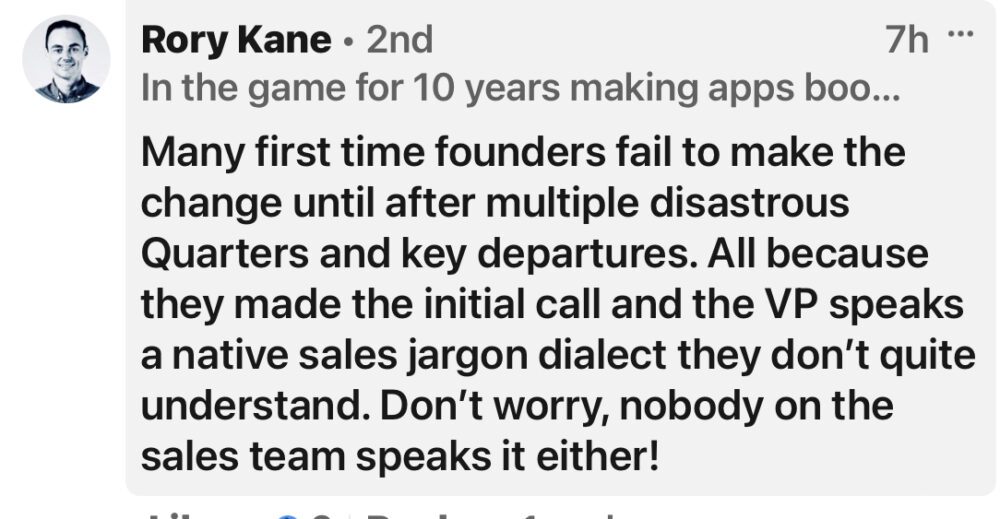Did you hire a good enough VP?
4 part test:
– who great did they hire in the first 60 days?
– did their #1 key metric improve?
– did they take part of the job off your plate?
– does the team believe?If they don't pass the 4 part test, they aren't good enough
— Jason ✨Be Kind✨ Lemkin (@jasonlk) June 12, 2023
Hiring your VPs as a founder is tough. Wait too long, and the business stalls out. Underhire, and you don’t get an owner. Overhire, all the money is gone. And simply getting it wrong? Well, that can set you back a year — if you wait to take action.
So how do you know? How do you know, quickly, if you’ve hired a “good enough” VP? Or if you hired someone that talked the talk, but isn’t the right fit for your startup?
Let’s break it down to 4 simple criteria. Then, I want you to be honest about them.
Criterion #1: Did they hire someone great in the first 60 days? Real VPs know half their job is about hiring great people, at first maybe just a few, and then later, tons of them. 50% of the job of a real VP is recruiting. And the best ones always have at least 1 or 2 great candidates in their back pocket. So if they haven’t hired anyone great in the first 30-60 days … they probably never will. And they probably aren’t a real VP. And that means you probably need to move on.

Criterion #2: Did their #1 key metric improve? You can’t expect magic from a VP. But you can expect in the first 60 days for one key metric to improve. Sales — for a VPS. Leads and Opportunities — for a VPM. CSAT or NPS for a VP of Customer Success. More product velocity for a VPE or VPP. A real VP makes some real improvements in Job #1 in their first 60 days. Someone that isn’t a fit tells you why they can’t make progress that quickly. If you hear that excuse, you probably need to move on. A related post here.
And one very important note: yes, this is true in tougher times, and yes, this is also true when a company is struggling a bit. In fact, when times are great, that’s when sometimes it’s harder to see a quick impact. In tougher times, a great VP will take whatever leads you have, whatever customers you do have … and just do better. At least a little better. And right away. Can a great VP of Sales turn 20% growth into 100% growth overnight? Probably not. But they likely can turn 20% growth into at least 30% by doing a much, much better job with prospects and existing customers.
Criterion #3: Did they take part of their job off your plate? Your first VPs especially will be taking over functions the co-founders own. You may still need to spend just as much time in sales when you hire a great VP of Sales — but you shouldn’t have to own it as much. Some of the job just has to come off your plate, pretty quickly. Or you didn’t hire a real VP.
Criterion #4: Does the team believe? The team knows. They’ve been working there for a while. They know if someone comes in and improves things — or doesn’t. When you don’t see the team’s confidence build fairly quickly, ideally in the first 30 days — you didn’t hire a real VP. You almost certainly need to move on.
Ok, you probably agree with these 4 criteria, at least mostly. Now is the real challenge. To move on if your new VP doesn’t pass this 4-part test. No excuses. No thinking meeting 3/4 or 2/4 of the 4-point test is OK for now. Especially no giving them more time.
You can hire a stretch candidate, someone who’s only done some of the job before, someone that has a lot to prove. More on that here. That’s OK and often the right choice. But they have to get the core of the VP job done. If they haven’t, move on. The damage will only compound from there.



